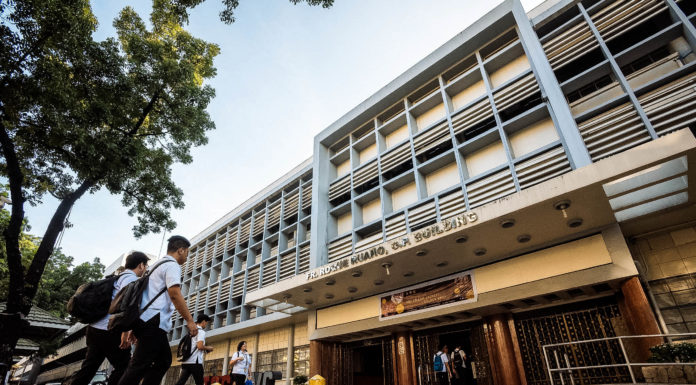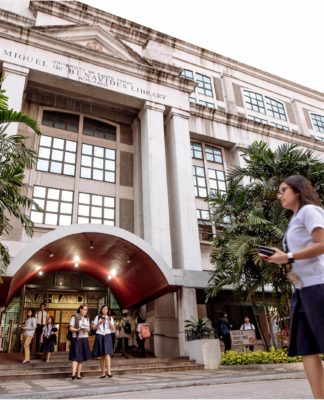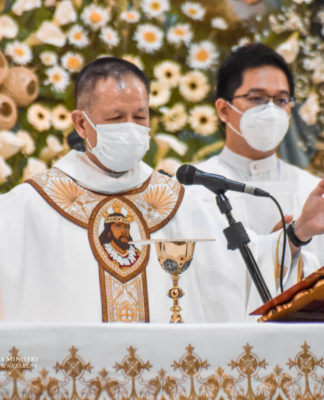THE STUDENTS’ Code is on its way to enactment, with only minor revisions left after a 10-year delay, and could land on the Rector’s desk as early as August this academic year.
Central Student Council (CSC) President Ina Vergara said the Office for Student Affairs (OSA) has approved the charter. The charter is ready for submission to the Office of the Vice Rector for Academic Affairs (OVRAA) and UST Faculty Union (USTFU) following several meetings with OSA, which yielded only slight changes in the code’s terminologies.
“Actually, medyo kinakabahan kami pero sa bilis, the way OSA handles it, okay na [ito] this year. From the past years, ‘dun maraming problems. Ngayon, rewording na lang,” Vergara said in an interview.
OVRAA and USTFU will align the Students’ Code with the new collective bargaining agreement (CBA). Upon their approval, the draft will be forwarded to Rector Fr. Herminio Dagohoy, O.P., which Vergara expects to happen in August. The Rector will then endorse it to the Council of Regents and the Academic Senate.
Vergara said there were no inconsistencies between the CBA and the Students’ Code aside from some nuances in the definition of “faculty” in the two documents.
The latest version of the Students’ Code, a copy of which was obtained by the Varsitarian, defines “faculty” as teaching and nonteaching employees, both tenured and nontenured, that are involved with academic services.
Meanwhile, the 2011-2016 USTFU CBA subdivides its definition of “faculty member” into regular and nonregular, academic teaching and academic nonteaching personnel.
“[S]o far, wala na kaming [nakikitang provisions na] baka magka-conflict [with the CBA]. Depende siguro how the Academic Affairs will perceive it,” she said, noting that no students’ rights will be compromised in coinciding the Students’ Code provisions with that of the CBA.
“We (students) are the major stake holders dito sa UST, pero of course, we need to respect din that the faculty also has rights, so in order to have equal rights, dapat we respect each other’s freedom [and] constitutional rights kaya dapat i-align in a way na maga-agree both sides,” Vergara said.
The Students’ Code, formerly the Magna Carta of Students’ Rights when it was first drafted in 2004, consists of the Thomasians’ responsibilities and prerogatives in academics, freedom of expression, information, participation in policy-making, organization, and due process, among others.
It went through three different rectors namely: Fr. Ernesto Arceo, O.P., Fr. Rolando de la Rosa, O.P., and Fr. Herminio Dagohoy, O.P.
The passage of the Students’ Code has been postponed several times due to changes in University administration and UST’s Quadricentennial celebration in 2011, while De la Rosa let his successor, Dagohoy, to handle the Students’ Code in 2012 after resigning before the end of his term.
No plebiscite
There will be no plebiscite before the Students’ Code is ratified, but local student council presidents will hold consultations from the students in their respective colleges this academic year.
Moreover, she said the CSC prioritizes passing the Students’ Code first before making drastic amendments.
“Basta ang aim namin is not to fully amend the code, but to establish it first kasi ‘yung amendments mas madali, pwede naman namin i-edit sa provision ngayon sa Central Board. ‘Di na dadaan sa plebiscite unlike CSC constitution na kailangan mo pang pagisipan nang intense kasi papaboto ulit kapag may revision every year,” Vergara said.
She added that the members of Central Board, which consists of student council presidents in the University, represent their respective colleges; therefore it is acceptable to have them sign the charter. Roberto A. Vergara Jr.















Not only the main building, Even our National Hero Monument…
Meron na rin syang back ground